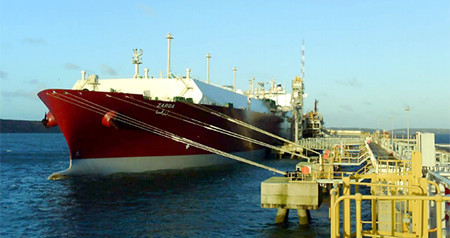On 2 March 2015, a deck officer on board the LNG carrier, Zarga, suffered severe head injuries when he was struck by a mooring rope that had parted while repositioning the vessel at the South Hook LNG terminal, Milford Haven. The officer, who was in charge of the vessel’s forward mooring party, was airlifted to a specialist head injuries trauma unit for emergency surgery
In July 2015, MAIB issued Safety Bulletin SB1/2015 in relation to the same incident. The Safety Bulletin highlighted the dangers of snapback when a high-modulus, low elongation, mooring rope fails when it is connected to a high elongation tail that is intended to reduce excessive dynamic loads on the mooring line during normal or severe operating conditions. This Safety Bulletin should be read in conjunction with SB1/2015.
The mooring lines fitted to Zarga were high-modulus polyethylene (HMPE) jacketed synthetic fibre ropes. They had a 44mm diameter and were 275m long with a minimum breaking load (MBL) when new of 137 tonnes. A close-fitting braided abrasion-resistant jacket encased the rope’s HMPE load-bearing core, which comprised three, low twist construction strands. Each strand consisted of 32 rope yarns. The core was wrapped in a self-amalgamating tape that assisted in bonding the jacket to the core.
The failed mooring rope had completed 1342 operating hours; it was 5 years old and had been expected to last for at least 8 years. The rope had a documented history and its previous on board visual and tactile inspection assessed it to be in good condition. Through life information recorded for each of the vessel’s 20 mooring lines included the port of use, and the prevailing ambient air temperatures and local weather conditions during use.
Lessons learned
Close-fitting jacketed synthetic fibre ropes with low twist constructions are more prone to failure under normal operating conditions than other mooring rope constructions. This is especially the case where the diameter to diameter (D:d) ratio between a ship’s deck fittings and its mooring ropes, is less than that recommended by the rope’s manufacturer. The nature of the close-fitting jacket precludes visual inspection of the rope’s core for signs of degradation. Operators of vessels using close-fitting jacketed synthetic fibre mooring ropes are strongly advised to contact the rope’s manufacturer/supplier to:
• Confirm or otherwise that the rope is suitable for its intended use and envisaged operating conditions including, specifically, that it is compatible with the vessel’s deck fittings, and,
• Ensure that an appropriate regime exists to monitor the condition of the ropes in use so as to maintain a high level of confidence that they can be replaced before they become materially weakened or degraded
Also read related article
Safety warning issued after mooring line failure on board LNG tanker
Click below to read the UK MAIB SB1/2016 report
Source: UK MAIB





























































